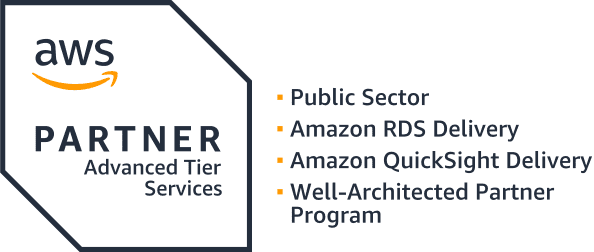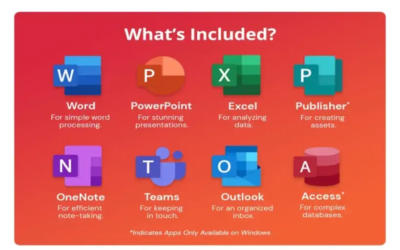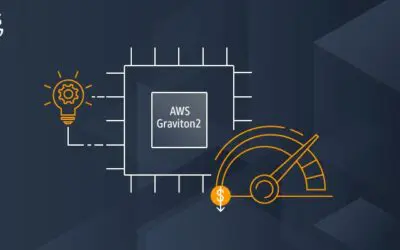What is Amazon RDS?
Amazon Relational Database Service (RDS) provides scalable databases with excellent performance, are fully managed, and are optimized to operate within an AWS environment. It is engineered to provide incredibly low latency in the order of microseconds. Apart from its quick response time, Amazon Aurora offers scalability and robust recovery capabilities, along with features such as in-memory caching that contribute to its outstanding speed. This service does not require users to maintain their own infrastructure or software, offloading many tasks to automated functions. RDS runs using many popular database languages, including MySQL, MariaDB, PostgreSQL, and Oracle.
RDS is exceptional for database management and is capable of tolerating workloads of different sizes. The automation of maintenance and upkeep tasks removes the need for dedicated staff to prevent faults related to negligence. Beyond just maintenance, Amazon provides countless instances and physical infrastructure emplacements globally to prevent outages from halting all services completely. If one server goes offline, there will always be another one at the ready to maintain local connection and prevent data loss. With how much data is processed, RDS incorporates extensive encryption and access controls for users to limit how easy critical data is for bad actors to access.
As an advanced AWS partner, we bring unparalleled expertise to architect, deploy, and optimize cloud solutions tailored to your unique needs.
What is Amazon Aurora?
Amazon Aurora is one of the database engine options for RDS, but can function on its own as a MySQL and PostgreSQL compatible database. It has exceptional performance and scalability and can deliver a high number of replica counts. Aurora’s capacity to deliver eclipses even RDS’ capacity three times over. Like RDS, Aurora is fully self-managed with all the maintenance tasks automated to the user’s specifications.
As previously mentioned, Aurora’s throughput is unmatched. Without needing to further optimize an environment, it can deliver five times the throughput MySQL provides. In conjunction with support for using multiple Availability Zones, it provides low latency, tolerance for high workloads, and failsafes in case of outages. Because Aurora can run serverless, users can provide resources whenever they need it.

Main Differences Between RDS and Aurora
Architecture
Aurora’s cloud-native architecture keeps computational components separate from storage and stores data in a shared cluster. This comes with the added benefit of keeping replication completely within the storage nodes so computational nodes remain undisrupted. The cluster is then distributed across upwards of six storage nodes and three different Availability Zones. Wherever data is allocated, Aurora automatically scales depending on immediate demand to upwards of 128TiB. The primary downside is that Aurora is limited to MySQL and PostgreSQL.
RDS is built more to resemble traditional database solutions with cloud functionality compared to Aurora. By comparison, it keeps both computational and storage functionality confined to the same nodes. RDS can scale up to 64TiB across all engines except for up to 16TiB for SQL Server engine. The biggest difference between RDS and Aurora architecturally is that provisioning, deploying, and managing can be automated if the RDS database is placed onto an Amazon EC2 instance. This aspect of the design allows RDS to work with more database types and flexibility to work on-premises.
Performance and Scaling
Amazon RDS offers both high performance and scalability for up to 32 vCPUs and 244 GiBs of memory. It even can support more instance classes, such as units with better memory optimization. If the databases are allocated to EC2 instances, memory, CPU, and storage can all be scaled independently of each other. However, because memory and compute resources are clustered, RDS needs to replicate all data before it can serve requests. Worse, having extra replicas creates stress on the system, so RDS limits the number of possible replicas to just five.
Amazon Aurora has virtually unlimited scalability and expands its resources in increments of 10GB. Scaling will automatically adjust resources up or down to meet current processing requirements. Data storage won’t be affected by scaling since it’s confined to the shared cluster volume, meaning the replication process RDS requires isn’t necessary. As a result, Aurora functions much faster than RDS and can recover from failures much sooner.
Backups and Data Replication
Amazon RDS can run multiple instances in parallel across Availability Zones. It runs off a central database and keeps any secondary or tertiary databases updated to serve as backups and to help the main database to tolerate traffic as needed. The main problem is that failovers must be established manually. But once precautions are established, RDS will automatically switch instances out if an outage occurs.
Amazon Aurora does have the added benefit of supporting up to fifteen replicas over RDS being able to support just five. Any replicas made with Aurora share the same volume and speed. Failovers are fully automated and can be set a given priority order for which one will be used as the replacement first. Due to the previously established designs, Aurora can utilize multi-Availability Zones faster than RDS.
Durability
Though RDS does require manual input, RDS does save any backups to an Amazon S3 instance where it will hold them indefinitely until the users delete them. By comparison, Aurora creates backup points for every second for up to thirty-five days before they are deleted automatically. Both RDS and Aurora do support point-in-time restorations to rollback in the case of errors.
Security Measures
Because RDS and Aurora both are native to AWS, the platform already provides a number of robust security tools that are compatible with each. Both services have controls for who has access to their databases that tie directly into AWS Identity Access Management (IAM) or by running the database from inside of a virtual private cloud. Security groups grant control over what EC2 instances or IP addresses have access to the database and will bar any attempt not from any established circles. Individually, Aurora supports Kerberos authentication while RDS provides encryption options and snapshots.
Which is Better?
RDS’ limitations on scaling and replication should be considered carefully during use. Even with the scaling options it does have, it is expensive to operate through multiple availability zones simultaneously. What RDS does have is flexibility to utilize seven different database types, including Aurora, MySQL, PostgreSQL, Microsoft SQL Server, and MariaDB. It is compatible with little need to adjust to accommodate the database of choice. RDS provides users full control over every aspect of the database For safe measures, access logs and recovery data is provided for compliance purposes. Finally, RDS is included on AWS’ list of free tier offerings, providing developers a chance to try RDS out before becoming invested. RDS is likely the better choice if a certain database needs to be used for a project.
Aurora’s offerings are not nearly as inherently flexible as RDS, providing support for only two database engines and a single storage engine called InnoDB. Additionally, Aurora lacks a free tier offering and pricing can be unpredictable. While Aurora does offer some benefits, such as improved performance and scalability, it is essential to note its limitations. Specifically, Aurora lacks compatibility with the extensive range of database engines available on RDS on Amazon EC2, which supports a total of seven DB engines. Additionally, the restriction to the InnoDB storage engine in Aurora may limit options for users requiring different storage engine capabilities. Furthermore, Aurora does not offer a free tier like some other AWS services, and its pricing structure can sometimes be unpredictable, leading to potential cost concerns for users.
Get Started Today!
At AllCode, our mission is to leverage our unique skillset and expertise to deliver innovative, top-tier software solutions that empower businesses to thrive in our world’s rapidly-evolving technological landscape.
Work with an expert. Work with AllCode





